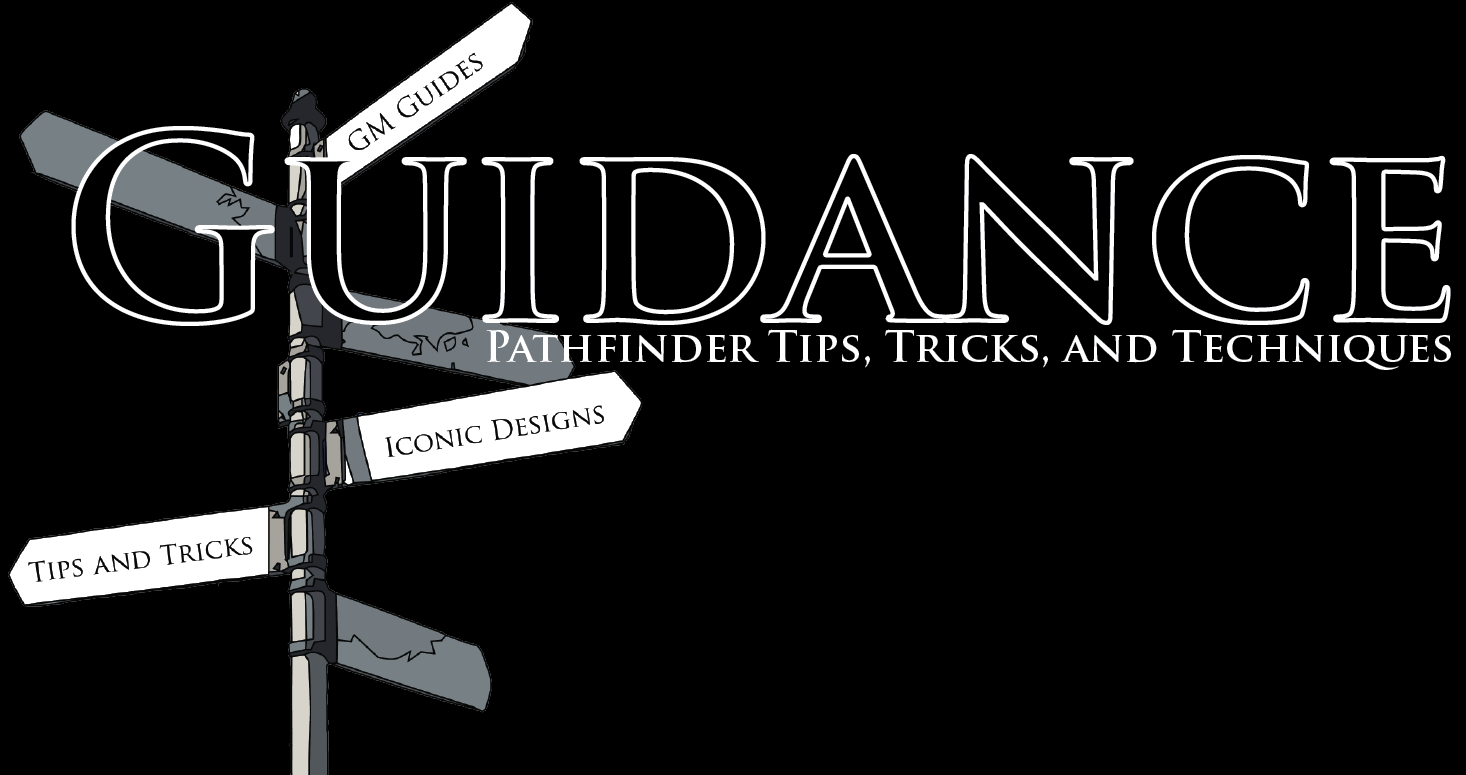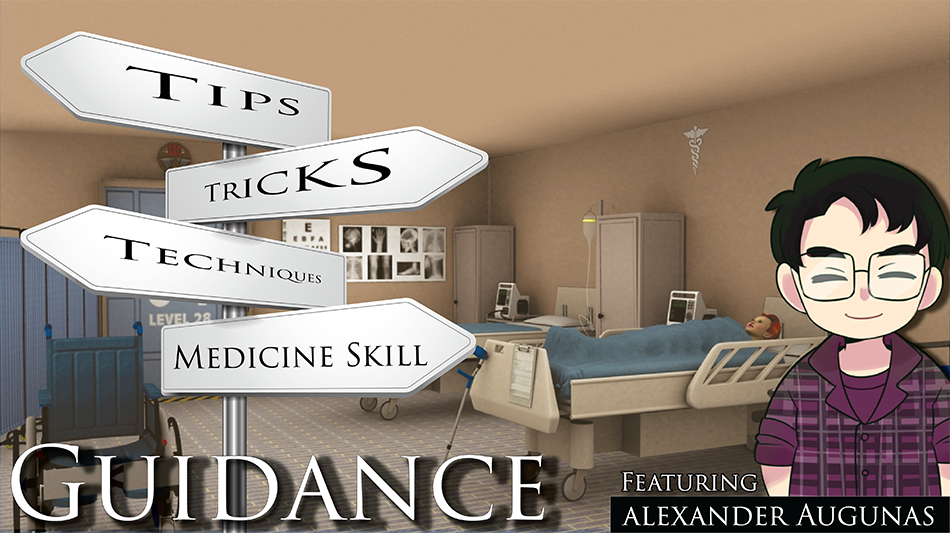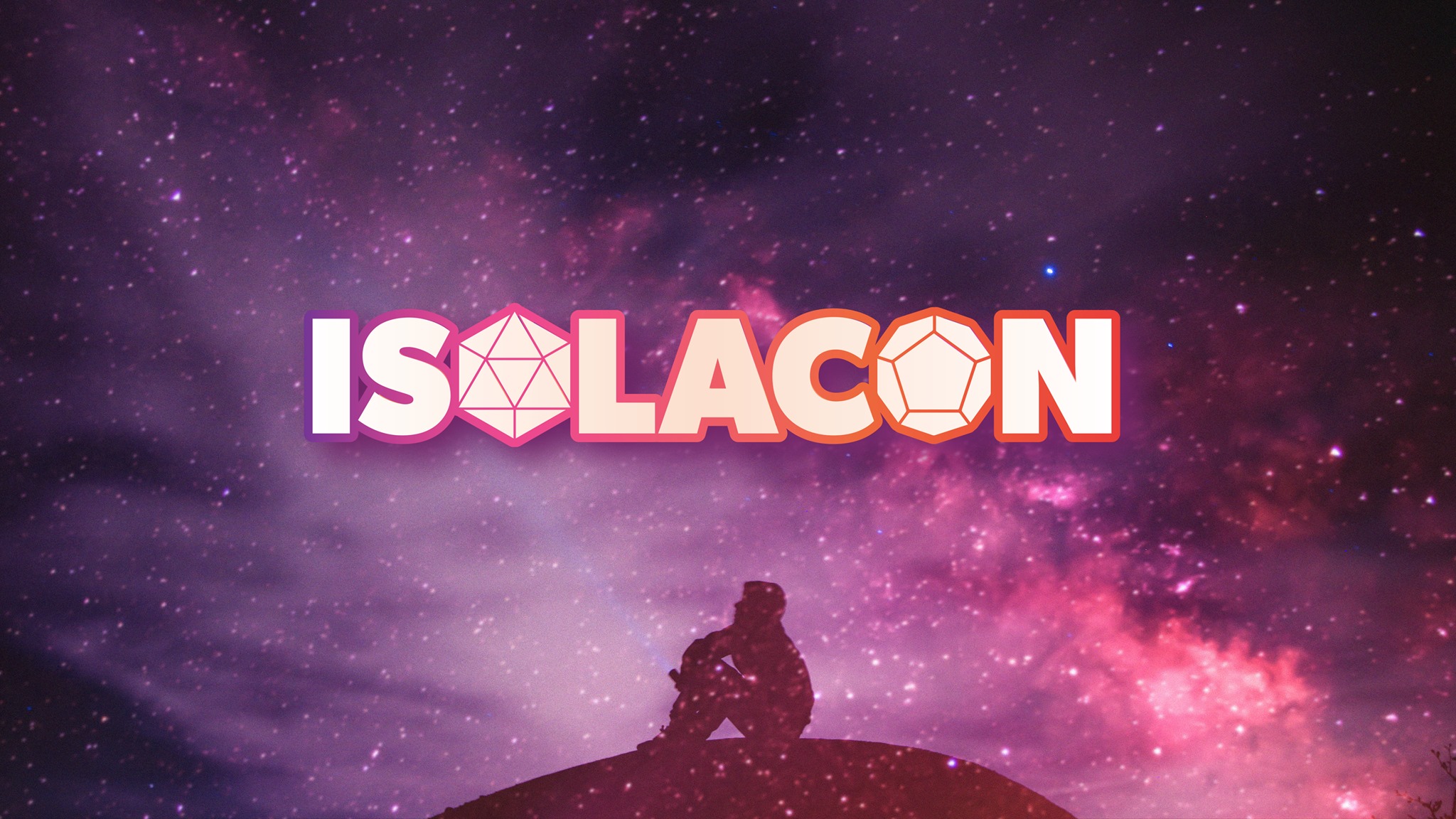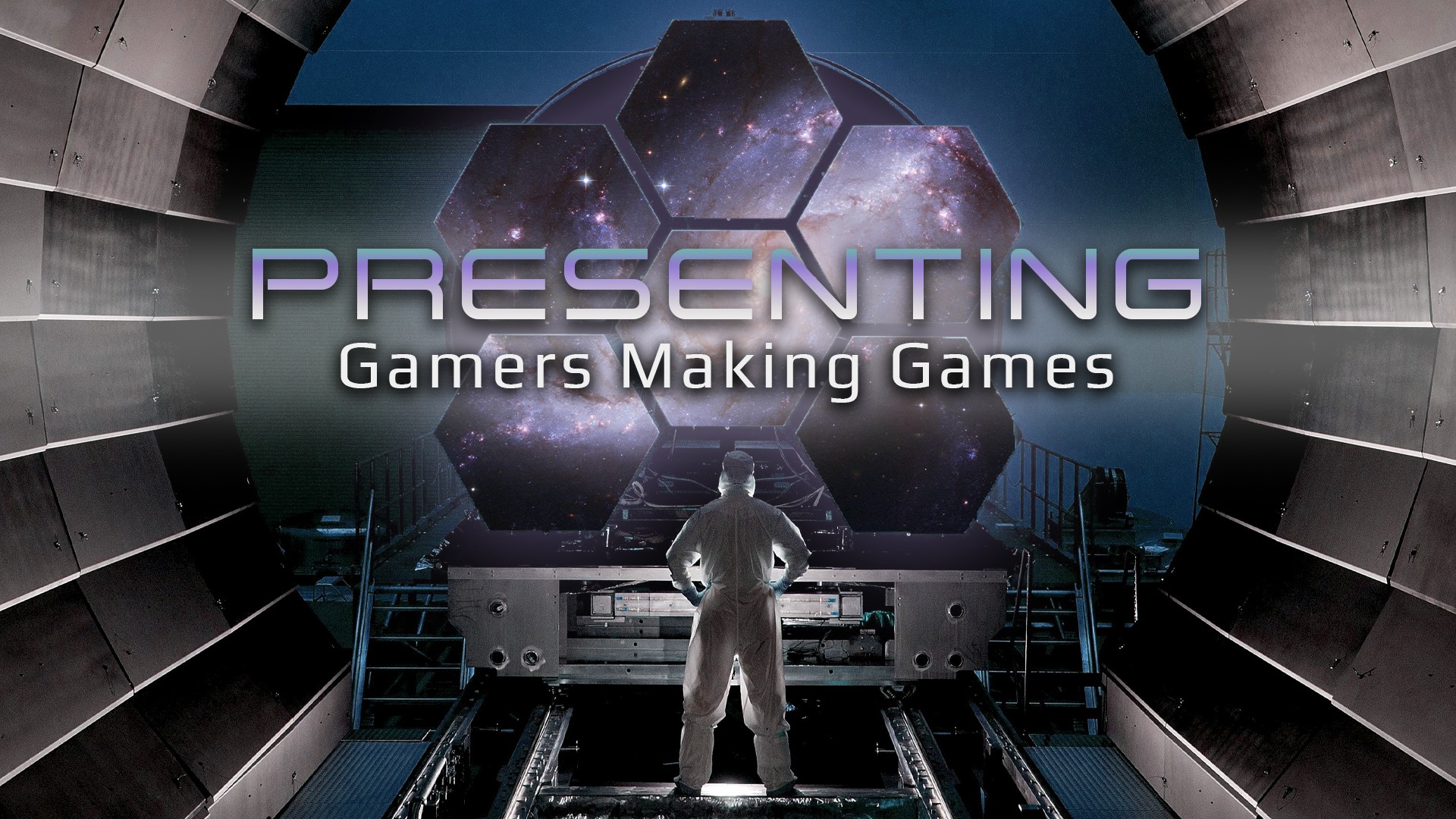Hello, and welcome to Guidance! I’m Alexander Augunas, the Everyman Gamer, and with the current atmosphere of the world embroiled in the 2020 pandemic, medicine is one of those topics that’s kind of on the brain all the time as it were. In regards to tabletop RPGs, this is specifically the Medicine skill, formerly Heal in Pathfinder 1st Edition and 3.5 Dungeons and Dragons. (Coincidentally, 5E *also* uses the term “Medicine” instead of “Heal,” probably because the latter is a verb that the game uses to, like, heal Hit Points and stuff.)
Whenever I talk to people about Pathfinder 2E, Paizo’s shiny new game, the two things that I always hear that people love are the 3-action system and the changes to the Medicine skill that essentially allow parties to function without a healer, provided they have enough time to lick their wounds. One of those two things is MUCH easier to adapt to Starfinder than the other, and it isn’t the action economy. So let’s take a few minutes and look over how to implement something like PF2’s Medicine rules to Starfinder!
What Do We Have?
Before we start porting over rules from a different game system, let’s start by looking at the rules we already have. In Starfinder, there are three different ways that you can use Medicine to heal Hit Point damage from characters. Let’s take a look at those methods now:
Long-Term Care
You can use Medicine to provide long-term care to a living, wounded creature. This can take a day or more, requires a medical lab or a medical bay on a starship, and has a DC of 30. If you succeed at the check, the patient recovers Hit Points and ability score damage (as well as recovers from poison states) at twice the normal rate. If you exceed the DC by 10 or more, the patient recovers Hit Points and ability score damage (as well as recovers from poison states) at three times the normal rate. You can tend as many as six patients at a time, attempting a check for each one each day to determine the rate of healing. You cannot take 20 on a Medicine check to provide long-term care.
Providing long-term care is the first real way Starfinder has to provide healing, and it is NOT easy. It has a DC 30 Medicine check strapped to it, meaning that if you perfectly optimize your character at 1st level you need a natural 20 to provide it unless you have a racial bonus to Medium checks, in which case you need an 18 or better. So, what’s your reward for this super-difficult check? You recover Hit Points and ability damage at twice the normal rate. So, what’s the normal rate?
- Recovering Hit Points Naturally: With a full night’s rest (8 hours of sleep or more), you recover 1 HP per character level. Any significant interruption during your rest prevents you from healing that night. If you undergo complete bed rest for 24 hours, you recover 2 HP per character level.
-
Recovering From Ability Damage: Temporary ability damage heals at the rate of 1 point per night of rest (8 hours) for each affected ability score. Complete bed rest for 24 hours restores 2 points for each affected ability score. Ability drain does not heal naturally. See Ability Damage, Ability Drain, and Negative Levels on page 252 for more information.
That’s pretty darn slow! Of course in Starfinder, you heal all of your Stamina Points after 10 minutes of doing nothing, so it’s not like restoring yourself is extremely difficult. More like restoring yourself above half your Hit Points is extremely difficult. It takes a lot of time to provide long-term care (8 hours or 24 hours) and doesn’t give a huge return compared to magic (1 HP/level for 8 hours or sleep or 2 HP/level for 24 hours per sleep). One thing I don’t like about this rule set is the inefficiency. Sleeping for 24 hours literally heals less than sleeping for 8 hours 3 times (aka 24 hours) would no matter how you look at it, and considering the lowest Hit Point class has 5 Hit Points per level, resting isn’t a good way to help anyone get back onto their feet. That can be really frustrating when you’re trying to build a party because the mystic’s niche is so grounded that you sort of don’t have party healing in core without one.
Treat Deadly Wounds
You can use Medicine to restore Hit Points to a living, wounded creature. This takes 1 minute, and the DC is based on the medical equipment used. If you succeed at the check, you restore 1 Hit Point per level or CR of the creature you are treating. If you exceed the DC by 5 or more, you add your Intelligence modifier to the amount healed. A creature can receive this treatment only once every 24-hour period, unless it is delivered in a medical lab. Most medical labs allow you to treat a creature’s deadly wounds at least twice per day.
This is Starfinder’s “fast healing” option, and right away you can see it has some benefits and some downfalls. For one, it heals as much as 8 hours of rest with 1 minute of work, which is nice. However, it has a 24 hour limit and the number of Hit Points healed doesn’t scale well at all; only 1 point per level, with a bonus equal to your Intelligence modifier if you pass by 5 or more. You might also notice that Treat Deadly Wounds doesn’t have a DC; instead, its based on the kind of medkit you have access to. A basic medkit sets the DC at 25, while an advanced medkit sets the DC at 20. Every Starship with a medical bay has access to an advanced medkit (medical bays count as those after all), but that means that until you’re 5th level and able to afford your own advanced medkit for the field, you’re only really able to use deadly wounds on a person once per day when you’re not on your starship. All in all, a difficult check combined with a low result makes treat deadly wounds … not the greatest.
Pathfinder 2’s Way
So Starfinder’s medical healing is extremely limited. Let’s take a look at Pathfinder 2’s version for comparison.
Treat Wounds
[ Exploration ] [ Healing ] [ Manipulate ]
You spend 10 minutes treating one injured living creature (targeting yourself, if you so choose). The target is then temporarily immune to Treat Wounds actions for 1 hour, but this interval overlaps with the time you spent treating (so a patient can be treated once per hour, not once per 70 minutes).
The Medicine check DC is usually 15, though the GM might adjust it based on the circumstances, such as treating a patient outside in a storm, or treating magically cursed wounds. If you’re an expert in Medicine, you can instead attempt a DC 20 check to increase the Hit Points regained by 10; if you’re a master of Medicine, you can instead attempt a DC 30 check to increase the Hit Points regained by 30; and if you’re legendary, you can instead attempt a DC 40 check to increase the Hit Points regained by 50. The damage dealt on a critical failure remains the same.
If you succeed at your check, you can continue treating the target to grant additional healing. If you treat them for a total of 1 hour, double the Hit Points they regain from Treat Wounds.
The result of your Medicine check determines how many Hit Points the target regains.
Critical Success The target regains 4d8 Hit Points, and its wounded condition is removed.
Success The target regains 2d8 Hit Points, and its wounded condition is removed.
Critical Failure The target takes 1d8 damage.
So looking at Pathfinder 2’s rules, we can see that Pathfinder 2’s rules are designed to heal significantly more Hit Points than SF’s. The Pathfinder rules have scaling DCs with scaling outcomes in them, and they’re designed to be significantly more impactful.
Comparing and Contrasting
When comparing the SF and the PF methods, it’s important to take each unique game into consideration. Here are some things for us to consider.
- When comparing SF healing to PF healing, Treat Deadly Wounds is not what we should be comparing. It’s Starfinder’s 10 minute rest to regain Resolve to Pathfinder 2’s Treat Wounds. Both heal large amounts of health, but both do so in very different ways. PF’s major limitation is time. The healing received is random and you can botch it up bad with poor Medicine checks (this becomes less of a problem later on). Starfinder’s major downside, on the other hand, is Resolve. Taking a 10 minute rest is super reliable; it basically refills half your Hit Points every time you do it. But you’re limited in the number of times you can rest, and your resting takes points from your big point pool that determines things like how often you can use your cool abilities or when you DIE.
- Pathfinder’s rules are definitely designed for high fantasy. Characters rest for a short while before they’re ready to be back in the fray. It’s very heroic, very inspiring.
- Starfinder’s rules are definitely designed for grit. Wounds are more impactful, and without magic they’re harder to heal. Magic becomes more important because without magic, you’re healing extremely slowly.
With this in mind, we should talk about Starfinder’s feel.
- Any solution to healing that we make to the Medicine skill needs to be able to maintain this “gritty feel” that Starfinder has. Rapidly healing Hit Points is going to take away from that sense of grit. At the same time, that feeling of grit can already be removed simply by putting a mystic in the party. That being said, there is a strong need to keep magic as the best option.
Solutions for Improving Medicine
Here are a few different ideas for how to improve Medicine to reduce the need for a mystic (or a similar healer).
Treat Deadly Wounds
You can use Medicine to restore Hit Points to a living, wounded creature. You spend 1 Resolve Point and treat the target’s wounds for 10 minutes, 8 hours, or 24 hours; you must choose how long to treat the target’s wounds when you spend your Resolve Point, and your treatment is disrupted, wasting all spent Resolve Points, if you are interrupted by anything more than a moment of conversation. At the end of your treatment, attempt a DC 20 Medicine check. If you succeed, your target can spend 1 Resolve Point to heal a number of Hit Points equal to 2 × your total ranks in Medicine, plus your Medicine skill’s key ability modifier (usually Intelligence). For every 5 by which your Medicine check exceeds the DC,you and your target can each spend 1 additional Resolve Point at the end of the treatment. For each additional Resolve Point spent, the target heals additional Hit Points equal to your ranks in Medicine . For example, if you beat the DC by 5, the target can spend a total of 2 Resolve Points to heal Hit Points equal to 3 × your ranks in Medicine plus the skill’s key ability modifier.
If you spend 8 hours treating the target’s wounds, you gain a +5 circumstance bonus to your Medicine check to treat deadly wounds, or +10 if you spend 24 hours treating them.
If you have access to a medkit, you reduce the total number of Resolve Points that you and your target must spend to treat your target’s wounds by 1 (minimum 1). If you have access to an advanced medkit (including a starship’s medical bay), you instead reduce the total number of Resolve Points that you and your target must spend to treat your target’s wounds by 2 (minimum 1).
Neither you nor the creature you’re treating can spend a Resolve Point to regain Stamina Points while you’re treating the creature’s deadly wounds, nor do you count as resting for the purpose of determining whether you can make your daily preparations to regain daily use abilities (such as and Resolve Points).
This is my solution to the problem. I think that it holds onto Starfinder’s grit while also making the medicine skill a little more useful. Let’s go over some notes.
- The static healing fits Starfinder’s out of combat healing better, specifically the healing touch ability of the mystic. It allows the healing to be quick and efficient without forcing the player to roll insane numbers of nice. (There was a version of this where I considered having the player roll 1d4 per rank in Medicine so nonmagical healing was more unreliable, but the prospect of asking a player to roll 15d4s at 15th level felt terrifying. Starfinder in general shies away from the “bucket of dice” of other games, instead preferring to have you roll bigger dice.
- Spending Resolve Points, both provider and the patient, ensures that Medicine still has a cost that limits how far people can adventure during the day.
- Long-term care gets folded into this by having long-term care effectively make high roles more effective; you’re more likely to succeed and can succeed by more, allowing you to spend more Resolve Points to heal quickly.
Well, I hope you found this system interesting. What do you think? Did I fix a problem you had with the Starfinder system? Retrofit something you liked from PF2 back into Starfinder? Or did I just mess with something for no good reason? Leave me your thoughts in the comments below, or on Know Direction’s Discord server where I’m an active member. Remember, practice your Medicine skill and stay safe out there!

Alexander “Alex” Augunas has been playing roleplaying games since 2007, which isn’t nearly as long as 90% of his colleagues. Alexander is an active freelancer for the Pathfinder Roleplaying Game and is best known as the author of the Pact Magic Unbound series by Radiance House. Alex is the owner of Everyman Gaming, LLC and is often stylized as the Everyman Gamer in honor of Guidance’s original home. Alex also cohosts the Private Sanctuary Podcast, along with fellow blogger Anthony Li, and you can follow their exploits on Facebook in the 3.5 Private Sanctuary Group, or on Alex’s Twitter, @AlJAug.






